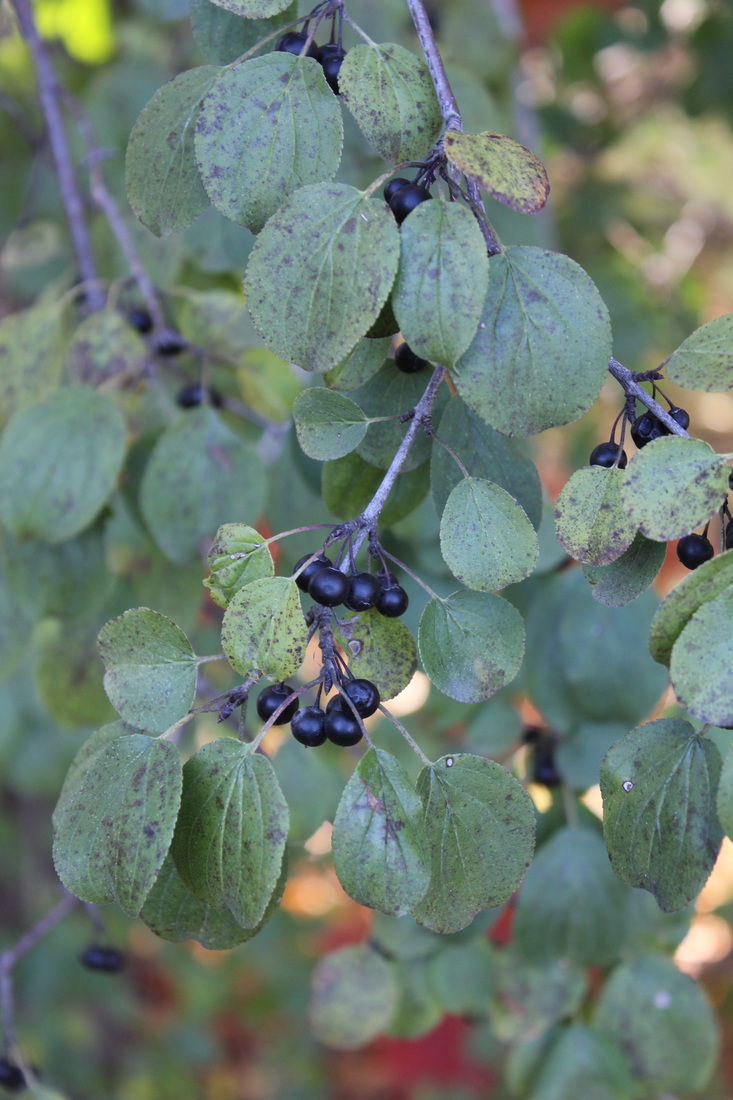21 October 2015
Common Buckthorn
Rhamnus cathartica
Northeast Penjajawoc Preserve
This deciduous tree, or shrub, mingles in with other low growing trees and shrubs most of the year, but is more noticeable in the fall when the berries turn black. I remembered seeing and learning about it a couple of years ago when Steve Sader led a Tree Identification Workshop at Northeast PJJ. It is near the Kittridge Road kiosk entrance.
Common Buckthorn is an invasive species that is "native to the temperate areas of Asia, Europe, and Asia" (The Complete Encyclopedia of Trees and Shrubs), and is believed to have been introduced into North America in the 19th century as an ornamental plant. Steve told us that birds will eat the berries, but that they have a laxative effect which is not the best meal for them. It is, however, good for seed dispersal which is probably why the species is doing so well.
Photo by Donne Sinderson
Common Buckthorn
Rhamnus cathartica
Northeast Penjajawoc Preserve
This deciduous tree, or shrub, mingles in with other low growing trees and shrubs most of the year, but is more noticeable in the fall when the berries turn black. I remembered seeing and learning about it a couple of years ago when Steve Sader led a Tree Identification Workshop at Northeast PJJ. It is near the Kittridge Road kiosk entrance.
Common Buckthorn is an invasive species that is "native to the temperate areas of Asia, Europe, and Asia" (The Complete Encyclopedia of Trees and Shrubs), and is believed to have been introduced into North America in the 19th century as an ornamental plant. Steve told us that birds will eat the berries, but that they have a laxative effect which is not the best meal for them. It is, however, good for seed dispersal which is probably why the species is doing so well.
Photo by Donne Sinderson


